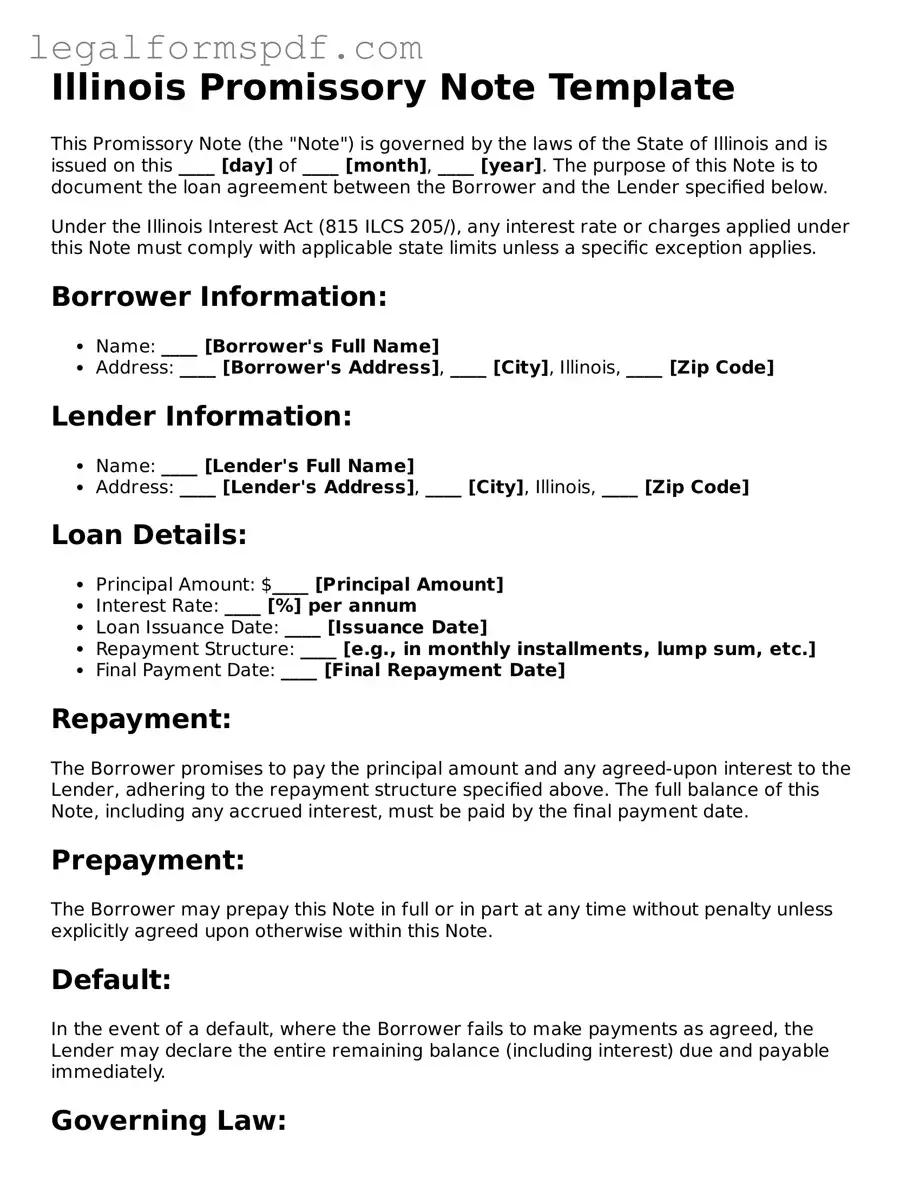What is an Illinois Promissory Note?
An Illinois Promissory Note is a legal document that records a loan agreement between two parties in the state of Illinois. It outlines how the borrower promises to repay the lender, including details such as the loan amount, interest rate, repayment schedule, and any other terms and conditions regarding the loan.
Is an Illinois Promissory Note legally binding?
Yes, an Illinois Promissory Note is legally binding once it is signed by both the borrower and the lender. This means both parties are legally obligated to follow the terms outlined in the document. Failure to do so may result in legal consequences.
Do I need a witness or notary for an Illinois Promissory Note?
While not always mandatory, having a witness or notarizing your Illinois Promissory Note can add a layer of authenticity and may be beneficial for legal enforcement. Illinois law does not specifically require a promissory note to be witnessed or notarized, but it is good practice, especially for significant loan amounts.
What should be included in an Illinois Promissory Note?
An Illinois Promissory Note should include the loan amount, interest rate, repayment schedule (including dates and amounts), the names and signatures of the borrower and lender, and any collateral securing the loan. It should also detail the consequences of non-payment and any other conditions agreed upon by both parties.
How can I enforce an Illinois Promissory Note if the borrower fails to pay?
If the borrower fails to make payments according to the agreed-upon schedule, the lender may seek legal recourse to enforce the Illinois Promissory Note. This often involves filing a lawsuit to collect the due amount, which may include the principal, interest, and legal costs.
Can an Illinois Promissory Note include interest?
Yes, an Illinois Promissory Note can include interest. However, it's important to ensure that the interest rate complies with Illinois' usury laws to avoid charging illegal interest rates. The usury laws establish the maximum interest rate that can be charged on a loan.
Is it possible to modify an Illinois Promissory Note?
Yes, an Illinois Promissory Note can be modified if both the borrower and lender agree to the changes. Any modifications should be made in writing and signed by both parties, with the modification becoming part of the original agreement.
Where can I obtain an Illinois Promissory Note form?
Illinois Promissory Note forms can be obtained from legal document websites, attorneys specializing in financial agreements, or financial institutions offering loan services. Ensure the form complies with Illinois state laws to avoid any legal issues.
